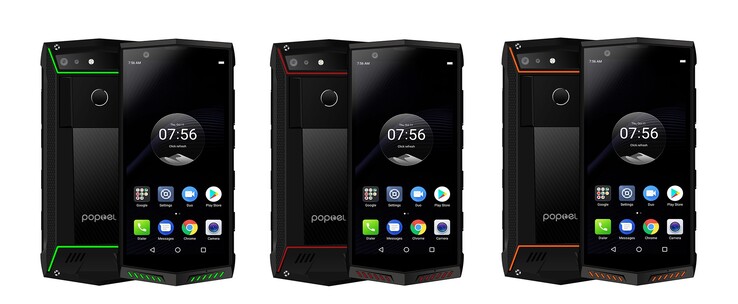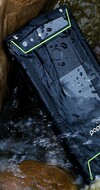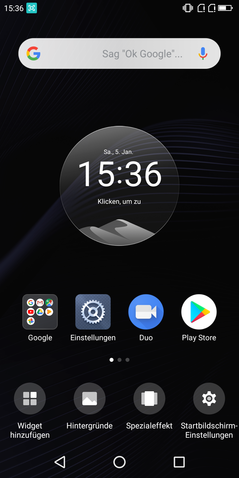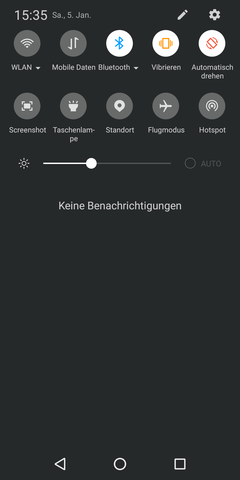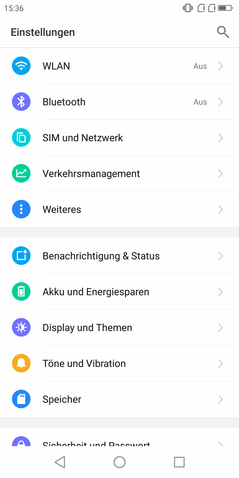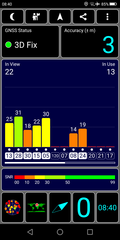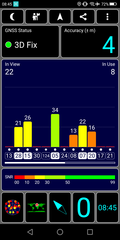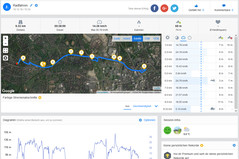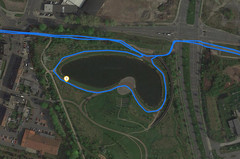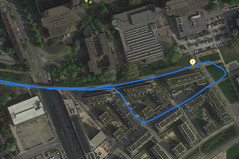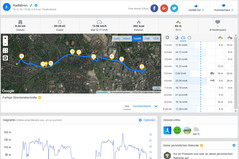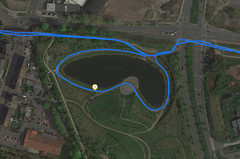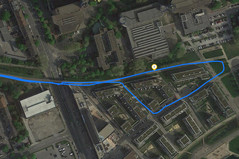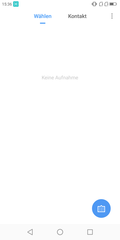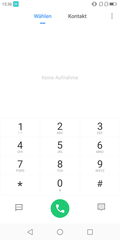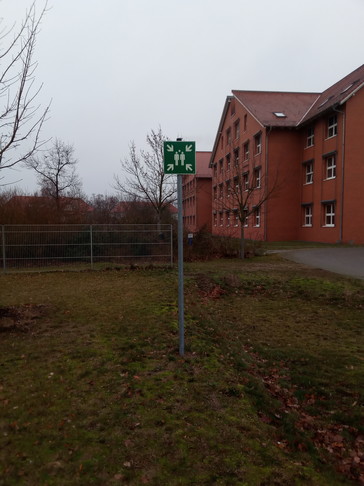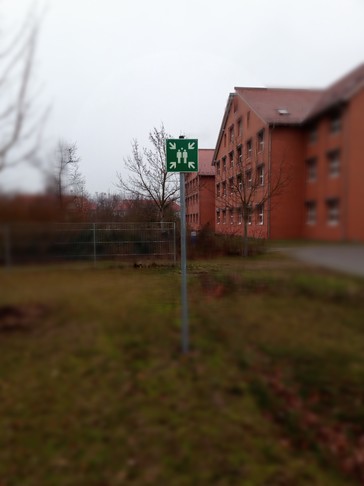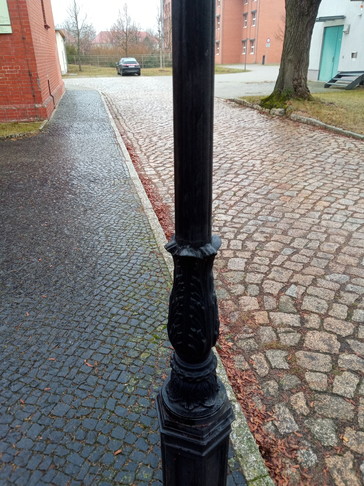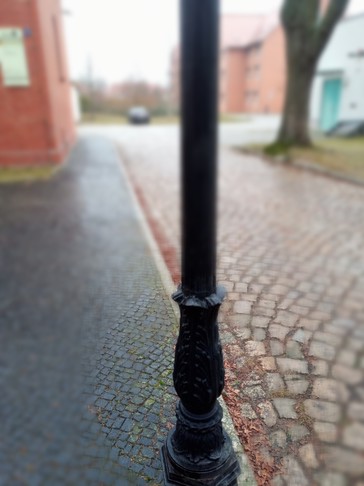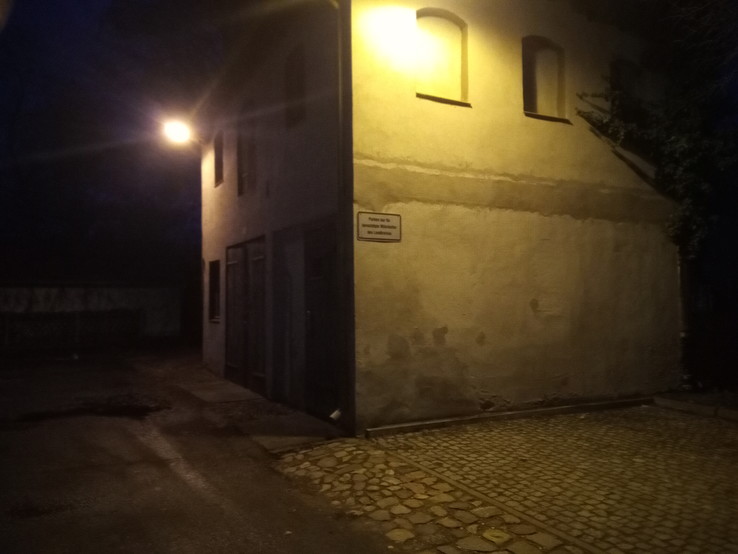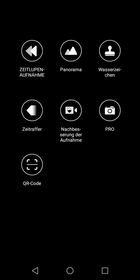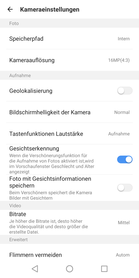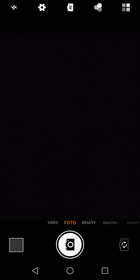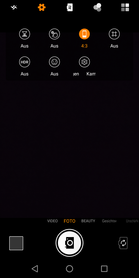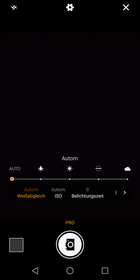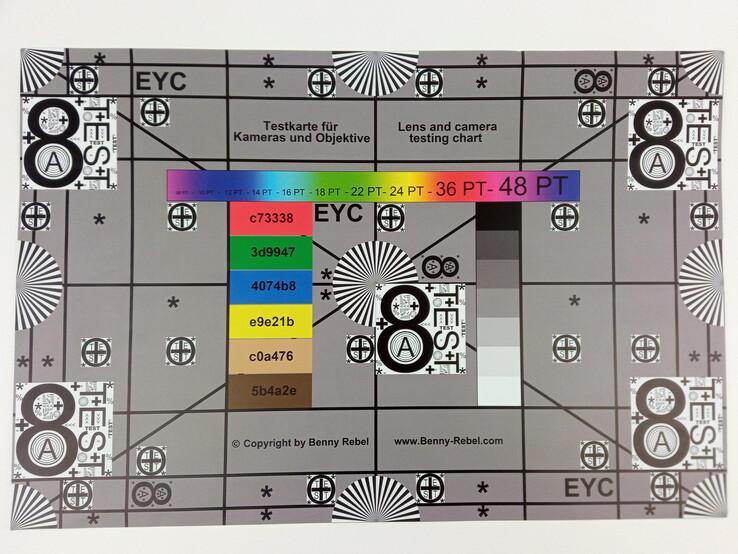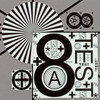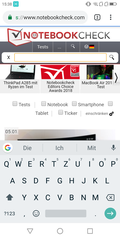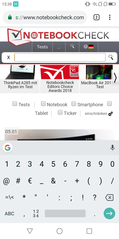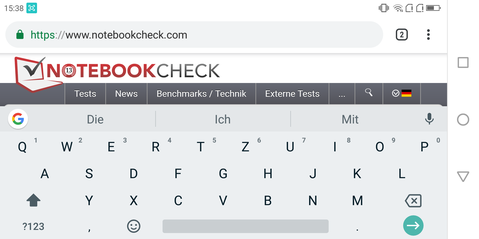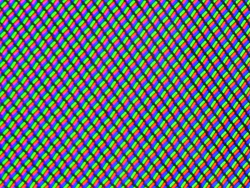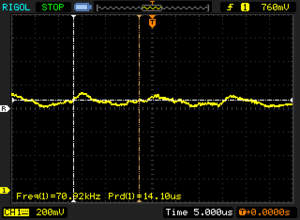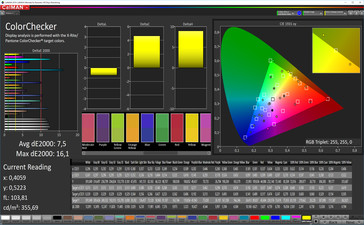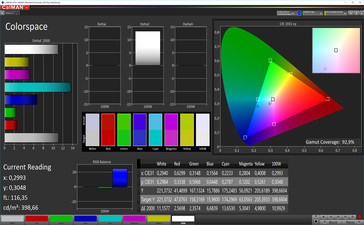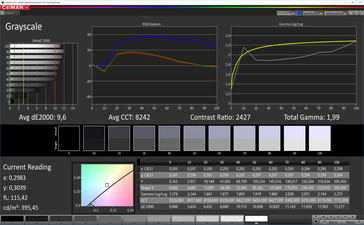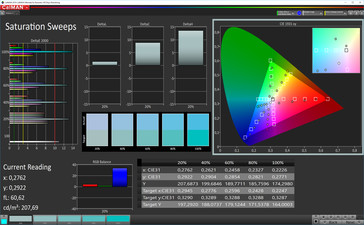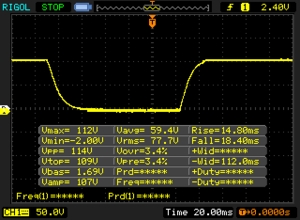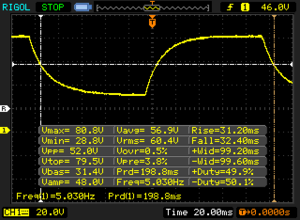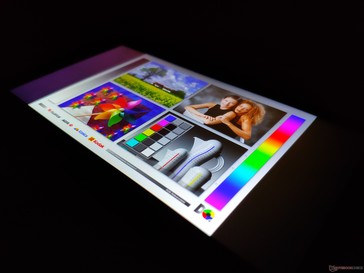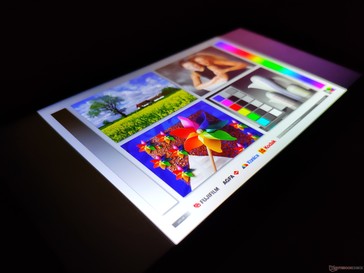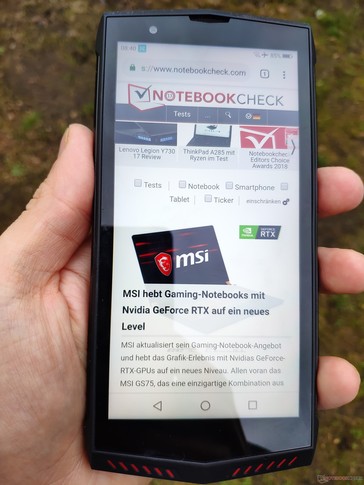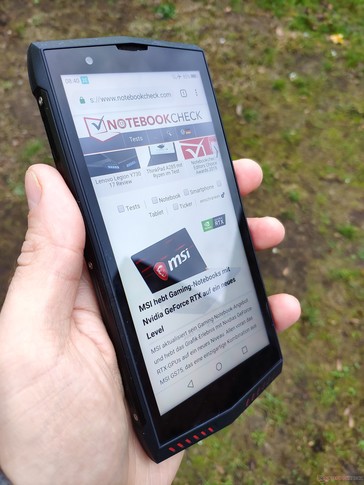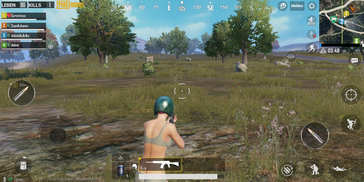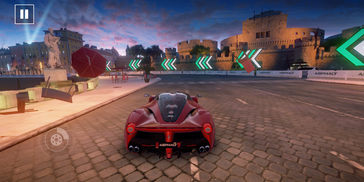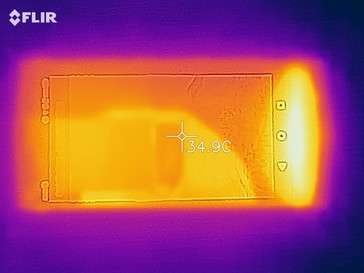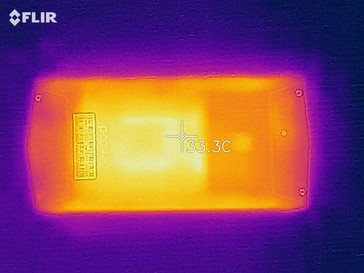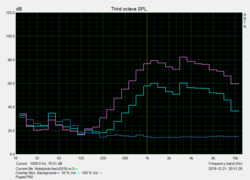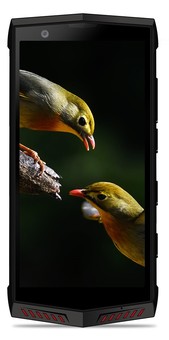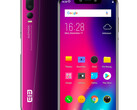Poptel P60 Smartphone Review
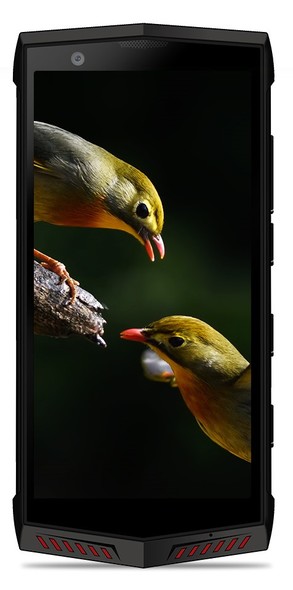
The Poptel P60 could be the perfect companion if you need a robust smartphone with a quality feel for use on construction sites or when camping and hiking. The midrange smartphone is IP68-certified against dust and water, and it is also MIL-STD-810G certified for drops up to 1.2 metres.
The P60 also has a 5.7-inch IPS display that operates natively at 2160x1080, a 5,000 mAh battery and 128 GB of internal storage. The device is powered by an octa-core MediaTek Helio P23 SoC and 6 GB of RAM. Poptel has equipped the device with an NFC chip too for use with services like Google Play.
We have chosen to compare our test unit against other comparably priced rugged smartphones. Our comparison devices include the Oukitel WP1, the WP2, the Poptel P9000 Max and the Ulefone Armor X. We will also consider the P60 against more conventional smartphones like the Honor 8X and the Xiaomi Mi 6X (Mi A2).
Case
Poptel sells the P60 in a choice of green, red and orange. However, the colours only accent the largely black device, so all three models look broadly identical. Our test device looks solid and sturdy, while its IP68 and MIL-STD-810G certifications suggest that the device should withstand the rigours of daily use. Please keep in mind that MIL-STD-810G certification means that a device has successfully passed 14 environmental and climatic tests. However, no independent organisation or agency certifies MIL-STD-810 compliance, so take the certification with a pinch of salt.
The P60 is a large device, with its tall and angular plastic frame making our test unit feel bulky in our hands. The device weighs 248 g too, which is heavier than most modern smartphones, although it is lighter than all our comparison devices. The physical keys are well placed though, while we welcome the inclusion of its dedicated camera button and its freely customizable button.
However, the device is let down by its disappointing build quality. The physical keys feel shaky in their housings too and have spongy pressure points. The display is protected by Corning Gorilla Glass 3, which is now three generations old. The P60 has a 64% screen-to-body ratio too, which is comparatively low by today’s standards, although this is common for outdoor smartphones.
Connectivity
Poptel equips the P60 with 128 GB of eMMC flash storage, of which around 110 GB is available on our test device. The device supports up to 128-GB microSD cards too should you need more storage. The P60 can format cards as internal storage, which allows the device to store apps and data on the expandable memory. However, file sizes are limited to 4 GB as the P60 does not support exFAT. Adding a microSD card uses up the hybrid SIM slot too, so you must do without dual-SIM functionality if you want to use expandable storage.
The P60 has a microUSB port that operates at USB 2.0 speeds. The device also supports OTG adapters, which allows you to connect peripherals like keyboards or USB sticks. The P60 is Miracast compatible too should you want to cast your device’s display to an external monitor wirelessly.
Software
The P60 ships with Android 8.1 Oreo at the time of testing. Our test unit has October 2018 Android security patches installed, which are now nearly four months old. Poptel has not provided any indication of whether it plans to upgrade the P60 to Android 9 Pie, but the device supports Project Treble.
Poptel has customised Android slightly and promises that it delivers “an intelligent interface, [a] powerful private system and new visual experiences”. The company has made minor visual changes like changing the colours of the icons in the Quick Settings menu and adjusting the layout of the Settings menu. There are a few additional software features too, but there is hardly any bloatware.
Communication & GPS
The P60 supports modern Wi-Fi standards up to IEEE 802.11n and can connect to 2.4 GHz or 5 GHz Wi-Fi networks. The device does not support the faster 802.11ac standard though, which is reflected in its underwhelming transfer speeds in our Wi-Fi tests. Our test unit finished bottom of both iperf3 Client Wi-Fi tests and up to 44% behind our slowest comparison device. We tested all the devices in our comparison table with our Linksys EA8500 reference router, but this did not stop the Xiaomi Mi 6X from achieving up to six times faster transfer speeds. We also measured a -43 dBm attenuation when we had the P60 next to a Telekom Speedport W921V router, which is rather weak.
The P60 supports GSM, 3G and LTE networks across both of its nano-SIM card slots. Poptel has equipped the device with 23 LTE bands including Band 20, which is unusually high for a sub-250 Euro (~US$283) smartphone. The P60 supports NFC and Bluetooth 4.0 for near field communication too.
| Networking | |
| iperf3 transmit AX12 | |
| Xiaomi Mi Mix 3 | |
| Xiaomi Mi 6X | |
| Honor 8X | |
| Oukitel WP1 | |
| Ulefone Armor X | |
| Oukitel WP2 | |
| Poptel P9000 Max | |
| Poptel P60 | |
| iperf3 receive AX12 | |
| Xiaomi Mi Mix 3 | |
| Xiaomi Mi 6X | |
| Honor 8X | |
| Ulefone Armor X | |
| Oukitel WP1 | |
| Oukitel WP2 | |
| Poptel P9000 Max | |
| Poptel P60 | |
The P60 uses GLONASS, GPS and SBAS for location services, which helps our test unit achieve a satellite fix with up to 3 metres accuracy outdoors. The device finds a sat fix with up to 4 metres accuracy inside too, which is impressive for a device at this price. The P60 takes a few seconds to find our location though, which is slower than many comparable smartphones.
We also took our test device on a bike ride to compare its location accuracy against our reference navigation system, the Garmin Edge 500. The P60 deviated by only 90 metres over the 9.33 km bike ride that the Garmin recorded us having cycled. Our test unit even plotted a more accurate route than the Garmin too, as demonstrated by the screenshots of us cycling around a lake. Overall, the P60 is reliable enough for more complex navigation tasks that require precise location data.
Telephone Functions & Call Quality
Calls sounded intelligible even at maximum volumes on the Vodafone network in Germany. The P60 supports calls over LTE (VoLTE) and Wi-Fi calling (VoWiFi) too, although your carrier must provision the smartphone for both technologies on its network before they will work on your device.
It is worth keeping in mind that the earpiece distorted our call partner’s voice slightly. Moreover, the microphone picked out our voice well, but it did not do a great job at eliminating background noise.
Cameras
Poptel has equipped the P60 with a 16 MP rear-facing camera that is supported by a 5 MP secondary sensor. The 16 MP camera is a Samsung ISOCELL sensor with an f/2.8 aperture and a 1 μm pixel size. Photos shot by our test unit look pale and lack details, while there is plenty of image noise even in pictures that we took in daylight.
The P60 takes pictures that are on par with our comparison devices, but there are plenty of comparably priced smartphones with higher-quality cameras than our test unit. This is compounded by the fact that the secondary rear-facing camera sensor has no effect on the quality of bokeh-effect photos, nor can you use the 5 MP camera independently either. Hence, we suspect that the depth of field effects are merely software-based instead, which explains why our test device does such a poor job at creating bokeh-effect photos, as demonstrated by the pictures below.
The Samsung sensor also struggles in low-light conditions, which is predictable for a budget smartphone. Photos are underexposed, lack detail and are dominated by image noise, which we expected considering the narrow aperture and small pixel size of the 16 MP rear-facing sensor.
The P60 has an 8 MP front-facing sensor too that also has an f/2.8 aperture. The camera takes passable photos given the device’s price, but the P60 is not a selfie specialist. Pictures also look too dark for our liking in low-light conditions. The camera can record videos in up to 1080p at 30 FPS too.
Accessories & Warranty
Poptel includes an 18 W (9V/2A) charger in the box along with a USB cable, a SIM tool and a screen protector.
The P60 comes with 12 months manufacturer’s warranty, but we suspect that this would require you to return the device to China in the event of a warranty claim. Hence, we would recommend buying the device from a reputable third-party supplier that provides its own warranty. Poptel currently sells the P60 on Amazon US & UK, so you would also be covered by Amazon warranty in the event of a fault with the device. Please see our Guarantees, Return policies and Warranties article for country-specific information.
Input Devices & Operation
The P60 has a five-point multi-touch touchscreen that worked without issue during our tests. The display glass is sufficiently sensitive too, while the device also uses the standard three onscreen-button array that most Android smartphones employ.
Poptel has also included a fingerprint sensor that sits on the back of the device. The sensor in our test unit is unreliable and sometimes would not recognise our fingerprints even after multiple attempts. The P60 also can be unlocked with your face, but this only worked around 50% of the time during our tests. Moreover, while Poptel claims that it has “an exclusive intelligent algorithm” and that the device uses “3,656 AI living detection analyses” to authenticate your face, the system merely uses the front-facing camera to create a simple 2D photo of your face. Hence, the system is not as secure as Apple’s Face ID or other technologies that create 3D depth profiles of your face, and it cannot be used as a form of biometric authentication in apps.
Display
The P60 has a 5.7-inch IPS display that operates natively at 2160x1080, which results in a pixel density of 424 PPI. We did not notice any pixels in daily use and at normal viewing distances, while onscreen text generally looked sharp.
Our test unit achieved an average maximum luminosity of 387 cd/m², according to X-Rite i1Pro 2, which puts the P60 bottom of our comparison table in this regard. The screen is 92% evenly lit though, which is better than all but the Honor 8X and the Xiaomi Mi Mix 3 of our comparison devices. Activating the ambient light sensor made no difference to the maximum brightness that the P60 could achieve, although its peak luminosity dropped by around 1% in the more practical APL50 test.
Our tests also highlighted that the screen flickers at over 70 kHz when set to 3% brightness or below. PWM can cause eye strain or headaches for some people, but the frequency is so high on the P60 that we doubt that this would affect anyone.
| |||||||||||||||||||||||||
Brightness Distribution: 92 %
Center on Battery: 401 cd/m²
Contrast: 2864:1 (Black: 0.14 cd/m²)
ΔE ColorChecker Calman: 7.5 | ∀{0.5-29.43 Ø4.77}
ΔE Greyscale Calman: 9.6 | ∀{0.09-98 Ø5}
92.9% sRGB (Calman 2D)
Gamma: 1.99
CCT: 8242 K
| Poptel P60 LCD IPS, 2160x1080, 5.7" | Oukitel WP1 IPS, 1440x720, 5.5" | Oukitel WP2 IPS, 2160x1080, 6" | Poptel P9000 Max LCD IPS, 1920x1080, 5.5" | Ulefone Armor X IPS, 1440x720, 5.5" | Xiaomi Mi 6X LCD IPS, 2160x1080, 6" | Honor 8X LCD IPS, 2340x1080, 6.5" | Xiaomi Mi Mix 3 OLED, 2340x1080, 6.4" | |
|---|---|---|---|---|---|---|---|---|
| Screen | -52% | -20% | -25% | -2% | -24% | -33% | 58% | |
| Brightness middle (cd/m²) | 401 | 561 40% | 472 18% | 406 1% | 564 41% | 459 14% | 484 21% | 599 49% |
| Brightness (cd/m²) | 387 | 537 39% | 456 18% | 397 3% | 541 40% | 441 14% | 469 21% | 593 53% |
| Brightness Distribution (%) | 92 | 84 -9% | 86 -7% | 90 -2% | 91 -1% | 91 -1% | 93 1% | 96 4% |
| Black Level * (cd/m²) | 0.14 | 0.85 -507% | 0.32 -129% | 0.38 -171% | 0.37 -164% | 0.47 -236% | 0.55 -293% | |
| Contrast (:1) | 2864 | 660 -77% | 1475 -48% | 1068 -63% | 1524 -47% | 977 -66% | 880 -69% | |
| Colorchecker dE 2000 * | 7.5 | 5.4 28% | 9.1 -21% | 6.7 11% | 5.1 32% | 5.8 23% | 7.3 3% | 1.4 81% |
| Colorchecker dE 2000 max. * | 16.1 | 11.8 27% | 14.8 8% | 13.8 14% | 9.6 40% | 10.7 34% | 11.1 31% | 3.2 80% |
| Greyscale dE 2000 * | 9.6 | 5.8 40% | 9.6 -0% | 8.5 11% | 5.4 44% | 7.3 24% | 7.4 23% | 2 79% |
| Gamma | 1.99 111% | 2.37 93% | 1.75 126% | 2.21 100% | 2.1 105% | 2.28 96% | 2.16 102% | 2.25 98% |
| CCT | 8242 79% | 7567 86% | 8713 75% | 8858 73% | 7755 84% | 7984 81% | 8534 76% | 6496 100% |
* ... smaller is better
Screen Flickering / PWM (Pulse-Width Modulation)
| Screen flickering / PWM detected | 70920 Hz | ≤ 3 % brightness setting | |
The display backlight flickers at 70920 Hz (worst case, e.g., utilizing PWM) Flickering detected at a brightness setting of 3 % and below. There should be no flickering or PWM above this brightness setting. The frequency of 70920 Hz is quite high, so most users sensitive to PWM should not notice any flickering. In comparison: 53 % of all tested devices do not use PWM to dim the display. If PWM was detected, an average of 8084 (minimum: 5 - maximum: 343500) Hz was measured. | |||
The P60 has a surprisingly low black level that we measured at 0.14 cd/m², which helps our test unit achieve a 2,864:1 contrast ratio and is one which puts the P60 well ahead of our comparison devices. The black level increased to 0.28 cd/m² in the APL50 test, while the contrast ratio drops to 1,407:1, but either set of values are impressive for such a cheap device.
We also subjected our test device to further display tests with a photo spectrometer and CalMAN analysis software, which checked how colour accurate the display is. The P60 largely covers the sRGB colour space, but its DeltaE deviations are well above the ideal value of 3. Moreover, the screen’s colour temperature exceeds our ideal value of 6,500 K, which causes the display to look too cold for our liking. CalMAN also revealed that grey tones have a turquoise tint to them, but there are no colour modes or white balance settings to rectify this.
Display Response Times
| ↔ Response Time Black to White | ||
|---|---|---|
| 33.2 ms ... rise ↗ and fall ↘ combined | ↗ 14.8 ms rise | |
| ↘ 18.4 ms fall | ||
| The screen shows slow response rates in our tests and will be unsatisfactory for gamers. In comparison, all tested devices range from 0.1 (minimum) to 240 (maximum) ms. » 89 % of all devices are better. This means that the measured response time is worse than the average of all tested devices (20.2 ms). | ||
| ↔ Response Time 50% Grey to 80% Grey | ||
| 63.6 ms ... rise ↗ and fall ↘ combined | ↗ 31.2 ms rise | |
| ↘ 32.4 ms fall | ||
| The screen shows slow response rates in our tests and will be unsatisfactory for gamers. In comparison, all tested devices range from 0.165 (minimum) to 636 (maximum) ms. » 97 % of all devices are better. This means that the measured response time is worse than the average of all tested devices (31.6 ms). | ||
The P60 has stable viewing angles thanks to its IPS display. We did not notice any colour or image distortions even at acute viewing angles, although brightness levels do reduce slightly.
Our test unit is easy to use outdoors too, at least in wintery conditions. The P60 has a glossy display that we suspect would be overwhelmed by reflections in bright direct sunlight. Hence, we would suggest using the P60 in the shade, where possible, during the summer months.
Performance
The P60 is powered by a MediaTek Helio P23 SoC, which the Chinese chip manufacturer released in 2017. The Helio P23 MT6763V integrates four performance and four power-saving ARM Cortex A53 cores, which can clock up to 2 GHz when required. The MT6763V is 300/500 MHz slower than its sibling, the MT6763T, although both SoCs integrate an ARM Mali-G71 MP2 GPU that supports modern APIs like OpenGL ES 3.2 and Vulkan 1.0.
Our test unit generally finished in the midfield of our synthetic comparison benchmarks and even outperformed the more powerful Oukitel WP1 with its Helio P23 MT6763V SoC. However, the P60 cannot compete with the more traditional, yet comparably priced, smartphones in our comparison tables like the Honor 8X and the Xiaomi Mi 6X (Mi A2). In short, the P60 is powerful enough for most tasks, but its system performance is underwhelming.
| AnTuTu v7 - Total Score (sort by value) | |
| Poptel P60 | |
| Oukitel WP1 | |
| Oukitel WP2 | |
| Poptel P9000 Max | |
| Ulefone Armor X | |
| Xiaomi Mi 6X | |
| Honor 8X | |
| Xiaomi Mi Mix 3 | |
| Average Mediatek Helio P23 MT6763V (83745 - 94789, n=5) | |
| AnTuTu v6 - Total Score (sort by value) | |
| Poptel P60 | |
| Oukitel WP1 | |
| Oukitel WP2 | |
| Ulefone Armor X | |
| Xiaomi Mi 6X | |
| Honor 8X | |
| Xiaomi Mi Mix 3 | |
| Average Mediatek Helio P23 MT6763V (62732 - 73075, n=4) | |
The P60 also achieved respectable scores in our browser benchmarks. Subjectively, websites load quickly, while complex web pages take slightly longer to appear onscreen.
| JetStream 1.1 - Total Score | |
| Xiaomi Mi Mix 3 (Chrome 70) | |
| Xiaomi Mi 6X (Chrome 67) | |
| Honor 8X (Chrome 70) | |
| Average Mediatek Helio P23 MT6763V (22 - 25.9, n=5) | |
| Oukitel WP1 (Chrome 70) | |
| Poptel P60 (Chrome 71) | |
| Poptel P9000 Max (Chrome 68) | |
| Ulefone Armor X (Chrome 66) | |
| Oukitel WP2 (Chroome Mobile 70) | |
| Octane V2 - Total Score | |
| Average of class Smartphone (2228 - 126661, n=194, last 2 years) | |
| Xiaomi Mi Mix 3 (Chrome 70) | |
| Xiaomi Mi 6X (Chrome 67) | |
| Honor 8X (Chrome 70) | |
| Average Mediatek Helio P23 MT6763V (3998 - 4862, n=5) | |
| Oukitel WP1 (Chrome 70) | |
| Poptel P60 (Chrome 71) | |
| Poptel P9000 Max (Chrome 68) | |
| Ulefone Armor X (Chrome 66) | |
| Oukitel WP2 (Chrome Mobile 70) | |
| Mozilla Kraken 1.1 - Total | |
| Ulefone Armor X (Chrome 66) | |
| Oukitel WP2 (Chrome Mobile 70) | |
| Oukitel WP2 (Chrome Mobile 70) | |
| Poptel P9000 Max (Chrome 68) | |
| Poptel P60 (Chrome 71) | |
| Average Mediatek Helio P23 MT6763V (11309 - 13077, n=5) | |
| Oukitel WP1 (Chrome 70) | |
| Xiaomi Mi 6X (Chrome 67) | |
| Honor 8X | |
| Xiaomi Mi Mix 3 (Chrome 70) | |
| Average of class Smartphone (257 - 28190, n=154, last 2 years) | |
* ... smaller is better
Unfortunately, Poptel has equipped the P60 with slow eMMC storage, although this is on par with the storage in many of our comparison devices. The same applies to the microSD card reader, which finished in second place in our comparison table to the Oukitel WP1. However, the P60’s transfer speeds are considerably slower than the 270 MB/s read and 150 MB/s write speeds that our reference Toshiba Exceria Pro M501 microSD card can achieve.
| Poptel P60 | Oukitel WP1 | Oukitel WP2 | Poptel P9000 Max | Ulefone Armor X | Xiaomi Mi 6X | Honor 8X | Xiaomi Mi Mix 3 | Average 128 GB eMMC Flash | Average of class Smartphone | |
|---|---|---|---|---|---|---|---|---|---|---|
| AndroBench 3-5 | 10% | -29% | -25% | -32% | -12% | 41% | 66% | 49% | 1013% | |
| Sequential Read 256KB (MB/s) | 288.2 | 285 -1% | 267.6 -7% | 269.4 -7% | 255.3 -11% | 272 -6% | 283.9 -1% | 675 134% | 300 ? 4% | 2235 ? 676% |
| Sequential Write 256KB (MB/s) | 188.8 | 241.3 28% | 98.6 -48% | 129.6 -31% | 82.8 -56% | 203.7 8% | 170 -10% | 206.8 10% | 195.1 ? 3% | 1871 ? 891% |
| Random Read 4KB (MB/s) | 69.7 | 64.2 -8% | 26.89 -61% | 35.1 -50% | 14.7 -79% | 73 5% | 49.54 -29% | 133.2 91% | 85.9 ? 23% | 297 ? 326% |
| Random Write 4KB (MB/s) | 15.18 | 20.83 37% | 13.23 -13% | 11.23 -26% | 10.17 -33% | 6.89 -55% | 59.9 295% | 19.54 29% | 58.1 ? 283% | 343 ? 2160% |
| Sequential Read 256KB SDCard (MB/s) | 80 ? | 81.2 ? 2% | 72.2 ? -10% | 72.9 ? -9% | 81.5 ? 2% | 75.2 ? -6% | 78.1 ? -2% | |||
| Sequential Write 256KB SDCard (MB/s) | 72.8 ? | 72.8 ? 0% | 47.92 ? -34% | 53.2 ? -27% | 62.6 ? -14% | 68.1 ? -6% | 61.8 ? -15% |
Games
The ARM Mali-G71 MP2 is a dual-core GPU that can clock up to 770 MHz. While the GPU supports most modern APIs, it can only handle complex modern games like Asphalt 9: Legends and PUBG Mobile at low graphics. Our test unit often struggled even at minimum graphics though; frequent stutters and lags make Asphalt 9 almost unplayable.
The touchscreen and accelerometer worked well throughout our gaming tests though, so you should have no problems with playing fast-paced games or racing games that use accelerometer-based steering controls.
Emissions
Temperature
Our test device hardly heated up during daily use and only reached a maximum of 32.1 °C at idle. Surface temperatures increased to 37.7 °C under sustained load, but this did not feel uncomfortably hot during our tests with the device.
(+) The maximum temperature on the upper side is 37.7 °C / 100 F, compared to the average of 35.2 °C / 95 F, ranging from 21.9 to 247 °C for the class Smartphone.
(+) The bottom heats up to a maximum of 31.9 °C / 89 F, compared to the average of 34 °C / 93 F
(+) In idle usage, the average temperature for the upper side is 28.3 °C / 83 F, compared to the device average of 32.9 °C / 91 F.
Speakers
The P60 has a single speaker that reached a maximum of 87 dB(A) during our tests. However, its sound quality is poor, and it provides unbalanced acoustics that are only good enough for watching things like short YouTube videos.
The device has a 3.5 mm jack too, which worked well during our tests. We had no issues with its Bluetooth connectivity either.
Poptel P60 audio analysis
(+) | speakers can play relatively loud (88.6 dB)
Bass 100 - 315 Hz
(-) | nearly no bass - on average 45.3% lower than median
(±) | linearity of bass is average (7.3% delta to prev. frequency)
Mids 400 - 2000 Hz
(±) | reduced mids - on average 9.2% lower than median
(±) | linearity of mids is average (10.6% delta to prev. frequency)
Highs 2 - 16 kHz
(±) | higher highs - on average 5.2% higher than median
(+) | highs are linear (6.4% delta to prev. frequency)
Overall 100 - 16.000 Hz
(-) | overall sound is not linear (30.1% difference to median)
Compared to same class
» 78% of all tested devices in this class were better, 3% similar, 18% worse
» The best had a delta of 11%, average was 35%, worst was 134%
Compared to all devices tested
» 88% of all tested devices were better, 3% similar, 9% worse
» The best had a delta of 4%, average was 24%, worst was 134%
Xiaomi Mi 6X audio analysis
(+) | speakers can play relatively loud (84.1 dB)
Bass 100 - 315 Hz
(-) | nearly no bass - on average 27.6% lower than median
(±) | linearity of bass is average (9.7% delta to prev. frequency)
Mids 400 - 2000 Hz
(+) | balanced mids - only 3.3% away from median
(+) | mids are linear (5.3% delta to prev. frequency)
Highs 2 - 16 kHz
(+) | balanced highs - only 2.7% away from median
(+) | highs are linear (4% delta to prev. frequency)
Overall 100 - 16.000 Hz
(±) | linearity of overall sound is average (19.1% difference to median)
Compared to same class
» 24% of all tested devices in this class were better, 9% similar, 67% worse
» The best had a delta of 11%, average was 35%, worst was 134%
Compared to all devices tested
» 45% of all tested devices were better, 7% similar, 48% worse
» The best had a delta of 4%, average was 24%, worst was 134%
Battery Life
Power Consumption
The P60 is an efficient device that generally consumes less power than our comparison devices. The Poptel P9000 Max achieved slightly lower power consumption values across our tests though.
| Off / Standby | |
| Idle | |
| Load |
|
Key:
min: | |
| Poptel P60 5000 mAh | Oukitel WP1 5000 mAh | Oukitel WP2 10214 mAh | Poptel P9000 Max 9000 mAh | Ulefone Armor X 5500 mAh | Xiaomi Mi 6X 3010 mAh | Honor 8X 3750 mAh | Average Mediatek Helio P23 MT6763V | Average of class Smartphone | |
|---|---|---|---|---|---|---|---|---|---|
| Power Consumption | -6% | -20% | 3% | -29% | -13% | -25% | -10% | -52% | |
| Idle Minimum * (Watt) | 0.81 | 0.77 5% | 1.14 -41% | 0.92 -14% | 1.22 -51% | 0.65 20% | 0.92 -14% | 0.851 ? -5% | 0.847 ? -5% |
| Idle Average * (Watt) | 2.14 | 1.98 7% | 1.99 7% | 1.9 11% | 2.07 3% | 1.94 9% | 2.3 -7% | 2.01 ? 6% | 1.448 ? 32% |
| Idle Maximum * (Watt) | 2.16 | 1.99 8% | 2.03 6% | 2.19 -1% | 2.14 1% | 1.97 9% | 2.32 -7% | 2.26 ? -5% | 1.633 ? 24% |
| Load Average * (Watt) | 3.02 | 3.89 -29% | 3.72 -23% | 3.1 -3% | 4.92 -63% | 4.65 -54% | 4.37 -45% | 3.74 ? -24% | 6.96 ? -130% |
| Load Maximum * (Watt) | 4.01 | 4.78 -19% | 5.96 -49% | 3.12 22% | 5.4 -35% | 5.93 -48% | 6.13 -53% | 4.9 ? -22% | 11.3 ? -182% |
* ... smaller is better
Battery Life
The P60 has a 5,000 mAh battery that lasted for over 20 hours in our Wi-Fi battery life test, during which we set the display to approximately 150 cd/m² and run a script that simulates the load required to render a website. The runtime is only beaten by the P9000 Max of our comparison devices, which has a 4,000 mAh larger battery than our test unit. In short, the P60 has excellent battery life.
| Poptel P60 5000 mAh | Oukitel WP1 5000 mAh | Oukitel WP2 10214 mAh | Poptel P9000 Max 9000 mAh | Ulefone Armor X 5500 mAh | Xiaomi Mi 6X 3010 mAh | Honor 8X 3750 mAh | |
|---|---|---|---|---|---|---|---|
| Battery runtime | |||||||
| WiFi v1.3 (h) | 20.2 | 16.2 -20% | 19.1 -5% | 22.4 11% | 14.1 -30% | 8.3 -59% | 14.2 -30% |
Pros
Cons
Verdict
The Poptel P60 is a decent outdoor smartphone, which impressed us with its robustness and its long runtimes, while the inclusion of NFC is a bonus. Unfortunately, the device also has its downsides.
The Poptel P60 is a worthwhile option if you are looking for an outdoor smartphone, but there are better devices on the market. Few have as good battery life as the P60 though.
Firstly, the case is not as sturdy as it looks, while its Wi-Fi performance is slower than all our comparison devices. Moreover, it has a below average camera, poorly implemented biometric authentication methods and a disappointingly poor mono speaker. The MediaTek SoC is also underpowered for a device at this price, although this is a common complaint with many outdoor smartphones.
Overall, Poptel has done a good job with the P60, but it has compromised on too many areas for the device to receive top marks.
Poptel P60
- 01/21/2019 v6 (old)
Marcus Herbrich




